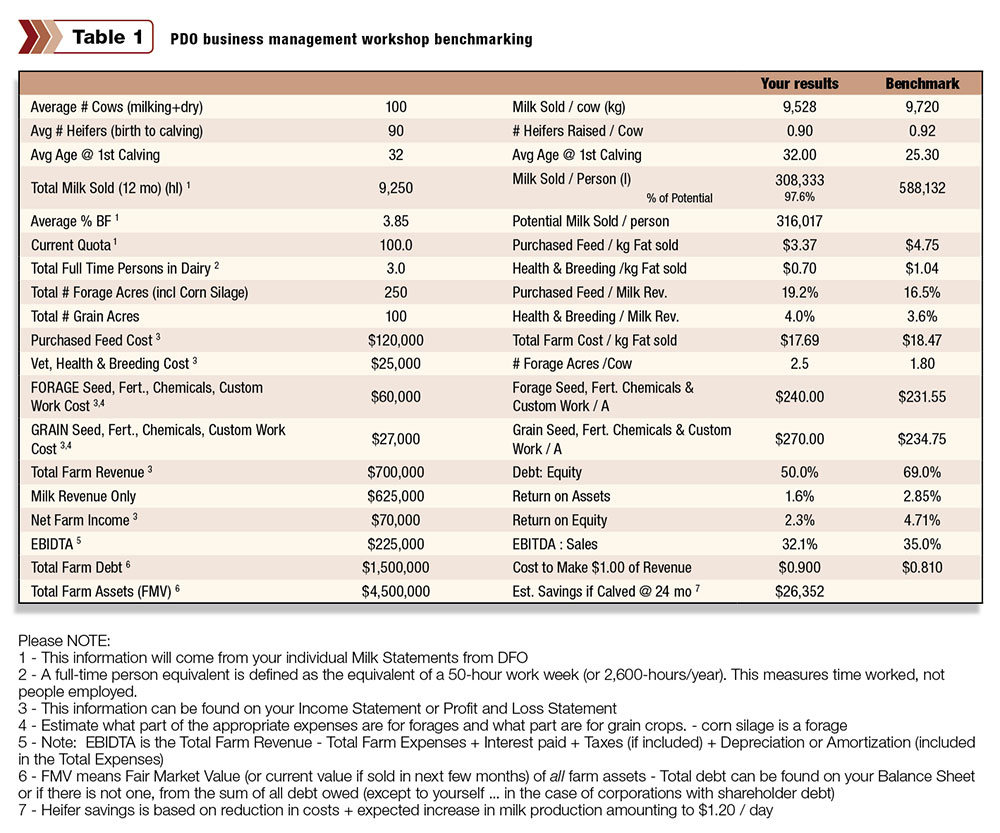We have the day-to-day knowledge of how to run a dairy but many of us do not take the time to sit down and analyze our business.
It is all too easy to get stuck in a rut. If you do not know where you are, how can you possibly know where you are going or, more importantly, how to get there?
That new barn you have been dreaming of seems out of reach – but maybe you just need to stop for a moment and benchmark your progress.
Benchmarking, or simply comparing yourself to others, is an excellent tool to have as a manager. It requires you to collect data, analyze the numbers and compare yourself to your peers.
Whether you are penciling out that next big purchase or simply want a better handle on your business, benchmarking will give you a clearer view of where you are and where you can go.
Many of us already do some informal benchmarking. How many times have we asked a neighbour how his corn yielded or what he got for that last load of veal calves?
Not only do we compare ourselves to each other, but we also compare our own progress over time. Many of us look at our bank account and ask ourselves: “How much money was in the bank account this time last year?” This is all benchmarking and we did not even know it!
Formal benchmarking is an excellent tool to have. Benchmarking forces you to know your cost of production. It allows you to trace every dollar coming out of your pocket and every dollar going back in.
Simply knowing the cost to produce a litre of milk is a good jumping-off point. You know you are okay as long as you are selling milk for more than it costs to make.
The usefulness of benchmarking really shines though when it highlights an opportunity for improvement and allows you to evaluate potential changes to your operation.

As a place to start, you can collect information like in Table 1, using your milk statements and financial records.
Click here or on the image at right to view it at full size in a new window.
You can work with your team of advisers (banker, accountant, vet, nutritionist, etc.) to develop the benchmarks (where your peers or the rest of the industry sits).
When comparing yourself to a standard, make sure you are comparing apples to apples. If you are comparing your 20-cow tiestall herd to the 200-cow freestall herd down the road, there may be some fundamental differences in efficiencies that can skew your comparison.
There are sophisticated benchmarking programs available, like CanWest DHI’s Profit Profiler analysis, that allow comparisons to your peers based on herd size and geographic area.
Once you know where your operation sits in comparison to your peers, you can set reasonable goals for yourself. Once you have goals, you can develop a path to help you achieve those goals.
The usefulness of benchmarking really shines when evaluating change. Once you know where your operation sits, you can calculate endless “what if” scenarios. What if I did build that new barn?
You can account for all new expenses and savings and see how they compare to your current situation.
Let’s take a look at the fictitious dairy found in Table 1. By lowering age at first calving from 30 months to 24 (a reasonable goal), there are opportunities for savings. Savings in rearing costs (feed, labour, etc.), plus increased milk production, can be used to evaluate new facilities or management that can actually allow heifers to calve in at 24 months.
The opportunities are endless. Managers who benchmark themselves are better equipped to ensure the continued success of their business. PD
Click here to download an interactive spreadsheet in a new window.
William Judge was a participant of the second annual Progressive Dairy Operators and Grand Valley Fortifiers Business Management Workshop Series. He was awarded second place for his final presentation on “Benchmarking Your Way to Success.”

- William Judge
- Dairy producer
- Judge Farms








